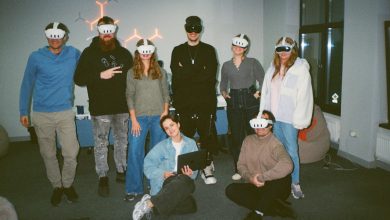
Workforce management has become the focal point for many organisations on the quest to maximise productivity, effectiveness, customer experience, and cost reduction. AI and workforce management combined can lead to some great results, which we’re going to look at in this article.
For many organisations, workforce management has been a challenge to achieve especially in industries that uses mixed working patterns, against the standard working pattern.
While digital transformation in HR promises to achieve effectiveness, value for money, customer experience etc, many organisations are yet to mature in digital transformation.
This means that complex departments like HR (a backbone for any organisation) are far behind in process automation, employee experience and productivity using technology.
In today’s world where AI has been embarrassed by many market leaders, most repetitive processes are still handled by humans instead of leveraging on AI process, automation, thereby freeing up employees time to focus on other tasks that require human intellect.
How can AI and workforce management improve workforce productivity?
From application submission, hiring, retention, and termination, AI can be used to perform a lot of tasks that are repetitive with speed comparing to human effort.
However, for AI to perform various activities, Information Architecture (IA) is vital.
Therefore it is imperative for organisations to identify their pain points and perform a data cleansing exercise as early as possible to ensure quality analysis for accurate predictions and forecasting where required.
At the end of the day, predictions and forecasting accuracy depends on data quality but I believe it is important to start with identifying the pain points, map out the data to work with, and then evaluate and analyse your data (as long as the data is not outdated, endeavour to use most recent data sets where possible).

Other recent advancements include learning models that find hidden patterns in the historical data used to generate forecasts of volume and work time.
AI tools can also determine which of a series of more than 40 models will lead to the strongest results for each type of work. The impact of these capabilities is huge. Accenture predicts that AI will increase business labour productivity by up to 40 percent by 2035.
The Impact of AI and workforce management on HR
AI can perform most tasks that seem mundane thereby freeing up the human effort for complex tasks eg;
Recruitment:
A good example is Ernst and Young’s (EY) Cognitive recruitment engine as well as IBM Watson among others, not only do they aid candidates to find tailored roles based on their skills and location preferences. These technologies can also evaluate hundreds of CVs in a short time and can recommend to candidates, roles to apply.
EY and IBM have seen an increase of 46% in applications alone since AI was introduced as part of their recruitment process. Notwithstanding scepticism on how Ethical AI is especially on CV selection, always remember AI is built based on the human level of intentionality, expertise, and adaptability.
This gives AI the ability to act on insights, balance consideration from analytics in real-time irrespective of conditions.
Therefore AI and IA vis-à-vis Information Architecture and AI are the bedrock of successful AI application at any given capacity.
Scheduling:
In any organisation, scheduling can be a challenge. Determining the best use of time and skills for a multi-skilled employee can be difficult. Figuring out how to best divide an employee’s time across workstreams for maximum efficiency and skill usage can now be done through predictive analysis.
AI solutions for workforce management provides skill usage assessment tools. These solutions can identify an optimal schedule for individuals shared across various workstreams.
Personalised Fairness Assignment
Often, employees want to work specific days of the week, weekends or holidays, while their colleagues may want to be rotated through their assignments routinely (work-life balance). Machine learning (ML) workforce management tools can monitor assignment history, fairness credits, volunteerism, work rules, and business need to manage the assignments fairly.
AI-driven workforce management solutions can solve this problem by leveraging ML models that predict the unique staff requirements of each required line. These algorithms allow the intelligence to determine accurate Full-Time Equivalent (FTE) numbers to a value that is.
Let me know what you think
Please share your comments and thoughts in the box below. Make sure you check back for my next article which will be a continuation of the topic AI and Workforce Management, except this time it will be focusing on Learning and Development, Performance Evaluation, and Appraisals and Changes Management.





